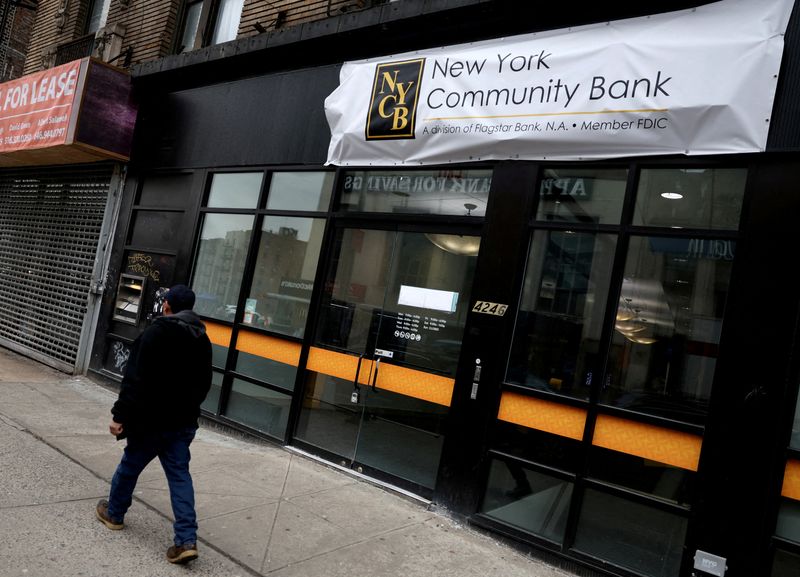By Manya Saini and Niket Nishant
(Reuters) -New York Community Bancorp (NASDAQ:CTBI)'s turnaround will likely take a long time as analysts expect profits to remain under pressure from the lender's efforts to boost reserves for potential bad loans in its commercial real estate portfolio.
This week's $1.05 billion capital raise has helped stem the rout in its stock and assuage near-term worries, but exposure to New York's rent-controlled multi-family properties - apartment buildings with more than four units - remains an overhang.
The trouble at the bank captured in six graphics:
CRE CONCENTRATION
Loans tied to multi-family properties, NYCB's primary focus for five decades, made up 44% of its $84.6 billion portfolio as of Dec. 31. Nearly 8.3% of such loans were "criticized", meaning at higher risk of default, the bank disclosed in January.
"We are somewhat encouraged that overall credit quality trends could remain manageable in the near-term, though we would expect the company to seriously examine reserve levels for adequacy," analysts at RBC Capital Markets said in a note.
The multi-family portfolio includes properties subject to rent control regulations, which limit landlords' freedom to increase rents at a time when borrowing rates remain high.
Office loans accounted for 4% of the total portfolio, NYCB said. More than half of the office portfolio is in Manhattan, where the vacancy rate is 15%, according to Moody's (NYSE:MCO).
LOAN LOSS PROVISIONS
The bank's credit loss provisions jumped more than four times to $552 million in the fourth quarter versus the year-ago quarter. But, analysts say it will need to build reserves further to cover the risk of more loans souring, especially CRE.
NYCB's current loan loss reserve ratio - a measure of reserves against total loans - for CRE appears low at 1.4%, Raymond James analyst Steven Moss said. Its peers have a median ratio of 2.48%, he added.
The key question now is whether this week's capital raise is enough "to manage through the challenges within the loan portfolio that still lie ahead," J.P. Morgan's Steven Alexopoulos, who covers NYCB, said in a note.
DEPOSIT OUTFLOW
NYCB disclosed this week that it had lost $5.8 billion, or 7%, of deposits over the last month. The bank's recent woes, which included a massive surprise goodwill impairment, could also lead to higher deposit costs and squeeze its net interest margins, analysts said.
Still, NYCB's uninsured deposits are relatively low at nearly 20%. D.A. Davidson analyst Peter Winter said the 7% deposit fall was less than expected "given all the turmoil" as well as several credit rating downgrades.
Silicon Valley Bank and the two others who failed last year, in contrast, had higher levels of uninsured deposits.
STOCK PERFORMANCE
NYCB's shares have lost nearly two-thirds of their value following a sell-off after the bank's dismal Jan. 31 earnings report and a 70% cut to its dividend. They were down another 5% on Friday.

Souring investor sentiment has also hammered the KBW Regional Banking Index, which is down 7.3% over the same period.
The stock will likely remain around current levels until investors get more clarity on the state of the bank's multi-family loan book, Raymond James' Moss said.